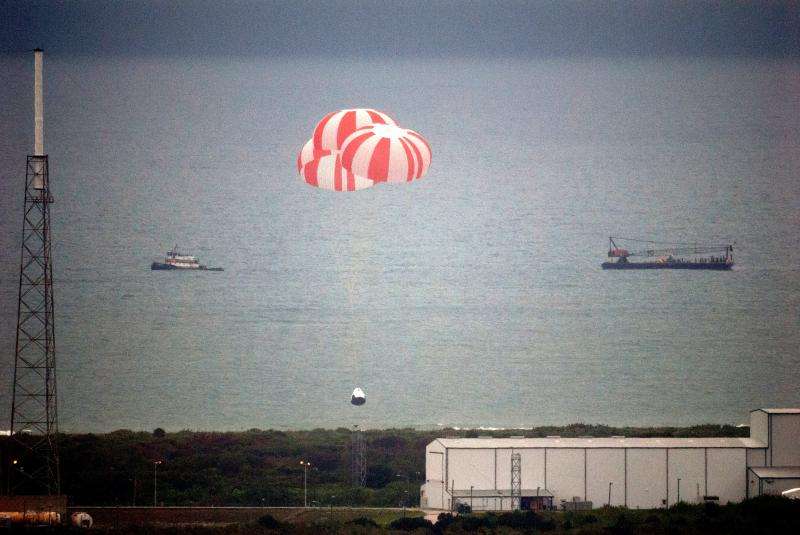NASA commercial crew partner SpaceX achieves pad abort milestone approval

NASA has approved a $30 million milestone payment to SpaceX under the agency's Commercial Crew Integrated Capability (CCiCap) agreement with the company following a recent and successful pad abort test of its Crew Dragon spacecraft.
Data gathered during the test are critical to understanding the safety and performance of the Crew Dragon spacecraft as the company continues on the path to certification for crew missions to the International Space Station, and helping return the ability to launch astronauts from the United States.
The Crew Dragon's eight SuperDraco engines fired at 9 a.m. EDT on May 6 for about six seconds, each instantly producing about 15,000 pounds of thrust and lifting the spacecraft off a specially built platform at Cape Canaveral Air Force Station's Space Launch Complex 40 in Florida. The spacecraft traveled 3,561 feet (1,187 meters) up before jettisoning its trunk and safely splashing down under three main parachutes in the Atlantic Ocean, 3,606 feet (1,202 meters) from the launch pad.
"This test was highly visible and provided volumes of important information, which serves as tangible proof that our team is making significant progress toward launching crews on American rockets from America soon," said Jon Cowart, partner manager for NASA's Commercial Crew Program. "The reams of data collected provide designers with a real benchmark of how accurate their analyses and models are at predicting reality. As great as our modern computational methods are, they still can't beat a flight test, like this, for finding out what is going on with the hardware."
The successful test of SpaceX's Crew Dragon launch escape capabilities demonstrated the spacecraft's ability to save astronauts in the unlikely event of a life-threatening situation on the launch pad.
"This is the first major flight test for a vehicle that will bring astronauts to space for the entire Commercial Crew Program," said Gwynne Shotwell, president of SpaceX. "The successful test validated key predictions as it relates to the transport of astronauts to the space station. With NASA's support, SpaceX continues to make excellent and rapid progress in making the Crew Dragon spacecraft the safest and most reliable vehicle ever flown."
The approval of the pad abort test milestone payment follows NASA's authorization for Boeing to begin work toward its first post-certification mission. These steps ensure continued progress in the agency's effort to return to U.S. soil American crew launches to the International Space Station. SpaceX is expected to receive its authorization to proceed with work on a post-certification mission later this year. The determination of which company will fly the first mission to station will be made at a later time.
More information: For more information about NASA's Commercial Crew Program, visit: www.nasa.gov/commercialcrew
Provided by NASA





















